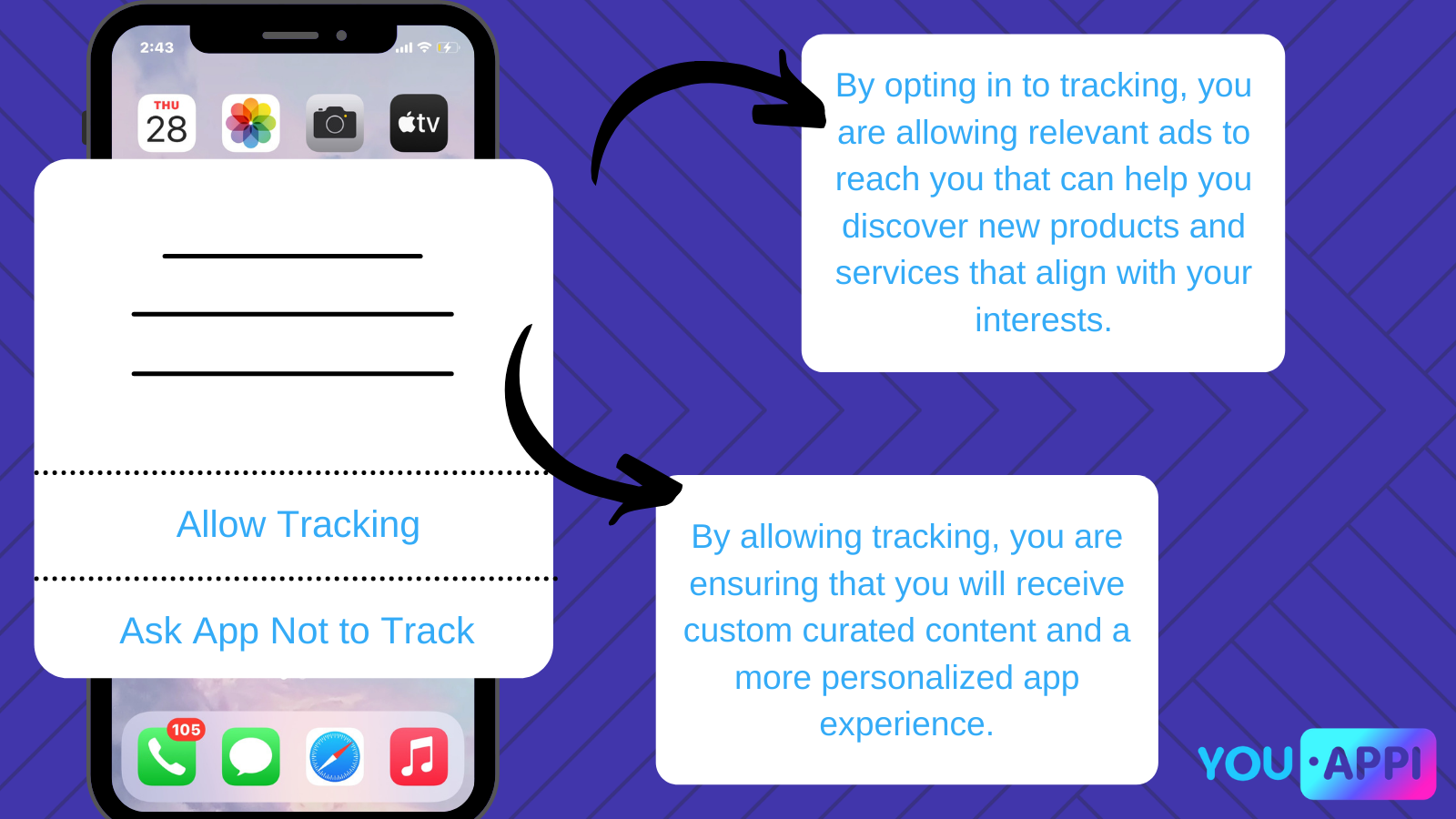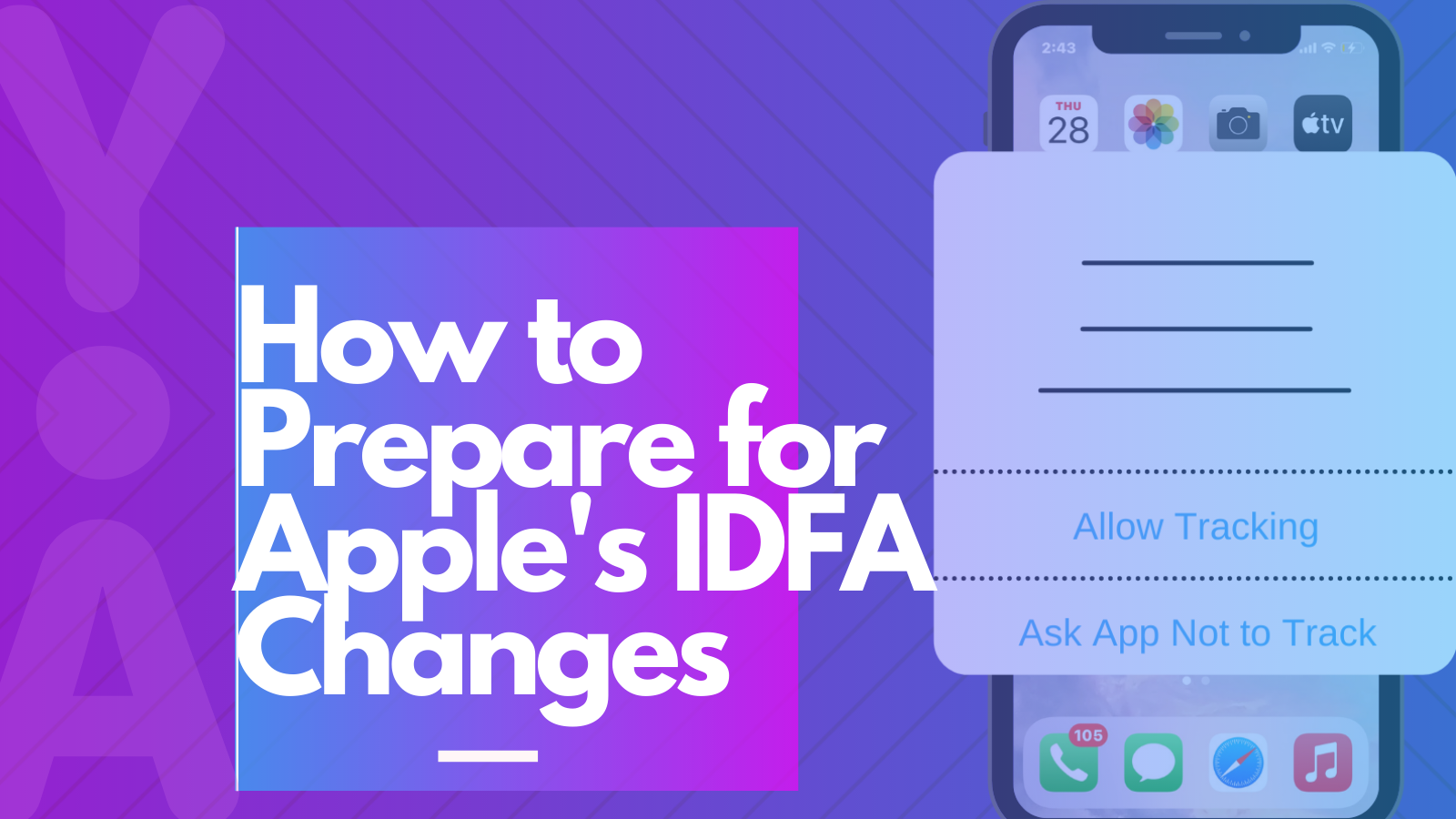It’s been seven months since Apple’s dramatic IDFA privacy announcements. In honor of Data Privacy Day, we are reviewing Apple’s IDFA changes, what’s happened since their announcement and how marketers can prepare for a post-IDFA world.
A Review of Apple’s IDFA Changes
For review, at the Worldwide Developers Conference (WWDC) last year, Apple announced that it would be restricting the use of the IDFA, the mobile industry’s device identifier for advertisers on iOS. Historically, IDFAs have been one of the most precise ways to track a mobile advertising campaign on iOS.
Starting in 2021 (most likely early Spring) apps will need to receive opt-in from users in order to use the IDFA. This grants explicit permission to apps tracking users across their products under the AppTrackingTransparency (ATT) framework. This framework will manage access to the IDFA gained through user consent. Within this framework, Apple has also outlined exemptions that might provide the ability for attribution as it exists today.
As an alternative to the IDFA opt-in provided by the ATT framework, Apple has offered its own solution to attribution and ad measurement: the SKAdNetwork. The SKAdNetwork (SKAd) is an entirely different approach to attribution that removes user level data unless publishing and advertising apps gain dual consent from the user. SKAd will provide attribution on ads displayed on iOS devices for publishers that are registered with the SKAdNetwork. Marketers will know an install occurred, but they won’t be able to connect a specific install with a specific device. This solution will essentially place the burden of attribution on the platform itself.
What’s Happened Since Apple’s Announcement
Since Apple’s announcement, all the major MMPs have released their own methodologies to prepare for iOS14. Apple also delayed the rollout of user opt-in permissions in September, giving marketers more time to test solutions and compare campaign measurement in the old IDFA system with Apple’s SKAdNetwork model.
While most marketers have made a plan to implement Apple’s SKAdNetwork framework for app install measurement, many have not implemented or tested it. In fact, according to some surveys only 13.5% of mobile marketers are fully ready for a future without the IDFA.
Here are four impactful steps you should take to prepare for Apple’s IDFA changes:
-
A/B Test Opt-In Notifications
First off, don’t be intimidated by the prospect of asking users to opt-in to IDFA tracking. Research suggests that many consumers are more comfortable with personalized advertising than historically assumed. In fact, some studies show that around 70% of consumers are open to opting-in for a tailored ad experience.
Apps also do not have to use the ATT opt-in prompt. But this means they won’t get access to any IDFA information. It also means they have to use SKAd and no other third party attribution to measure their campaigns.
Trust is a huge factor in how comfortable users are with opting-in. Building trust with your users by acting respectfully and transparently is key to an effective IDFA opt-in messaging strategy.
Our recommendation is to be as transparent as possible, and give users full control over their data, with the most granular opt-in options. Going forward, “consumer-first” calls for heightened data regulations will be the norm. Following this trend, explain the reason behind your data collection with compelling copy and illustrations. Outline the positive benefits of opting-in.

Studies have shown that if there are two options to give consent and the message is framed positively, users are more likely to opt-in. Frame your opt-in notice to give options and have a positive tone.
Test different “soft” opt-in messaging strategies and test them first. Use the results to optimize your ATT messaging. Remember: you can “soft message” as much as you need but once you call ATT for opt-in,you only have one chance.
-
Set Up & Test SKAdNetwork
It’s very important to pilot SKAd before the ATT framework takes hold in early spring. The first step is to make a plan for implementing SKAdNetwork in your attribution strategy. This plan should include a methodology for postback and conversion management. How will you measure app installs, capture postbacks, and manage conversions under this new framework?
Once you have a SKAdNetwork plan in place, it’s time to set up your app to send SKAdNetwork postbacks. After you set up these basic install notifications, it’s time to actually test them in a live or demo environment. The key here is to test SKAdNetwork end-to-end with your ad network(s) to ensure postbacks are being sent and received properly.
-
Create a SKAdNetwork Conversion Model
Despite SKAdNetwork’s limitations, it will be the main source of deterministic attribution available to advertisers for iOS.
Conversion models help you define the likely value of an install. This is important because understanding the value of acquired users is critical to estimating ROAS and building LTV models. Marketers must get good at building conversion models and predicting LTV in SKAdNetwork, because SKAdNetwork is the only source of post-install conversion data on acquired users.
Under the SKAdNetwork, marketers get signals that they can use to optimize their app install advertising only once, a minimum of 24 hours after app install. They also only get access to six bits of data on post-install events, engagements, or conversions.
Organizing and analyzing this post-install data efficiently will be critical to knowing whether an ad campaign, partner or channel is effective under this new system.
-
Craft an IDFA Alternative
Marketers should create a back up for the IDFA. Potential alternatives include custom internal IDs or the IDFV. The Identifier for Vendors (IDFV) is a code assigned to all apps by one developer and is shared across all apps by that developer on a device. Companies with many apps can use the IDFV for deterministic attribution on cross-app promotion.
Takeaways
While most marketers have made a plan to implement Apple’s SKAdNetwork framework for app install measurement, most have not implemented or tested it. In fact, only 13.5% of mobile marketers are fully ready for a future without the IDFA. Here are four impactful steps you should take to prepare for Apple’s IDFA changes.
- A/B Test Opt-In Notifications: Explain the reason behind your data collection with compelling copy and illustrations. Outline the positive benefits of opting-in. Create and test different “soft” messaging strategies and before using your one shot to call ATT for opt-in.
- Set up and Test SKAdNetwork: Make a plan for implementing SKAdNetwork that includes a strategy for postback and conversion management.
- Create a Conversion Model: Under the SKAdNetwork, marketers get signals they can use to optimize their app install advertising only once, a minimum of 24 hours after app install. Organize a model for analyzing this post-install data efficiently to evaluate whether an ad campaign, partner or channel is effective.
- Craft an IDFA Alternative: Set up an IDFA backup such as custom internal IDs or the IDFV.

